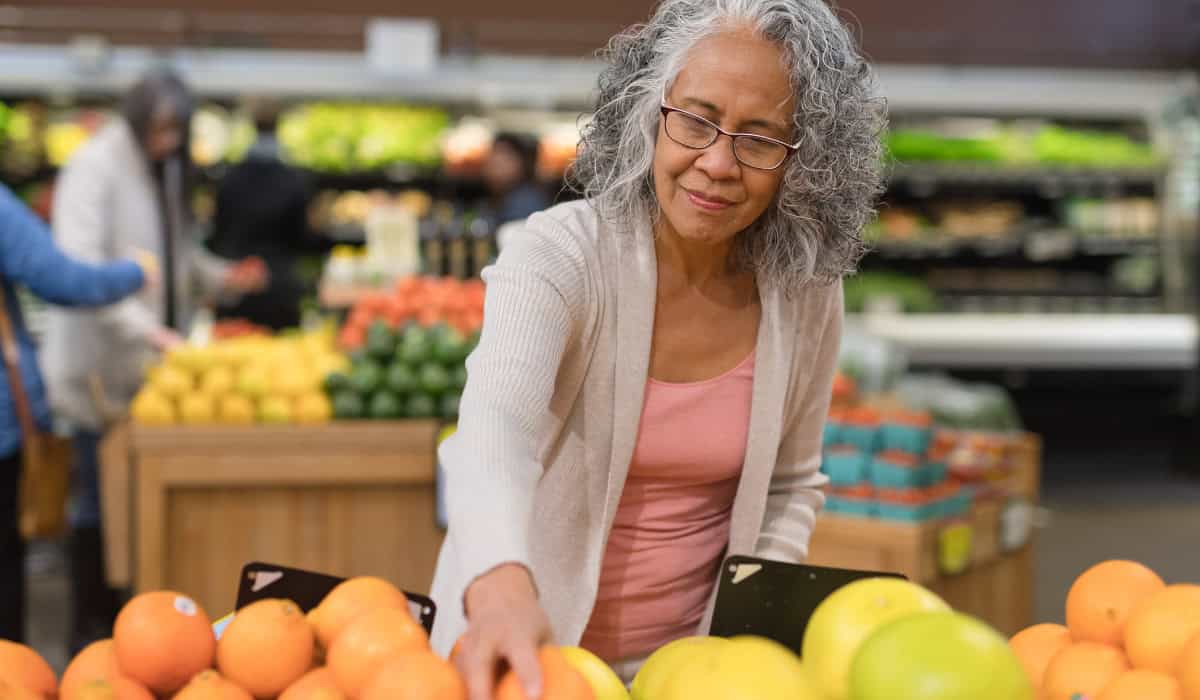Recent research conducted by 84.51º, Kroger’s retail and data science, insights, and media arm, found that people over the age of 65 will outnumber those under 18 by 2034, suggesting adjustments may be required by brands and retailers to meet their needs.
By 2030, all Baby Boomers will be at least age 65.
In reaching the dietary needs of Baby Boomers, 84.51º’s research suggested:
- Fresh staples like milk and bananas are top sellers.
- This generation shows less interest in niche categories such as cider or products made with natural ingredients.
- Overall, prioritizing freshness, convenience, and familiar indulgences aligns with frequent purchases across generations.
In a separate blog entry, Katarina Weil, 84.51º’s lead solution design consultant – customer foundations, said that household sizes may become smaller for some older consumers as children grow up and couples face divorce or widowhood later in life. However, for other older customers, aging brings larger households from multi-generational cohabitation and as younger relatives take on caregiving roles.
An aging population is also expected to make fewer shopping trips, particularly if their household size shrinks. 84.51º’s research shows that shoppers between the ages of 19 and 24 make approximately 34.3% more grocery trips than shoppers ages 75 and up.
“For retailers, this makes in-store conversions increasingly important,” said Weil. “Management of basket sizes and enhancing ease of shopping for seniors should become priorities. For CPG brands, these demographic realities require rethinking product offerings to serve the needs of older adults. Packaging, labeling and ingredients all may need to adapt to changing physical abilities and health conditions. Marketing and advertising must speak to older consumers.”
In an opinion column for Ad Age, Pamela Millman, associate director of integrated marketing at AARP Media, wrote that the over-50 crowd remains “often-overlooked” by food marketers, although the group buys 54% of all groceries in the U.S. and has become more health-conscious and cooks more frequently since the pandemic.
Millman wrote, “Whether preparing meals at home or shopping for groceries at the store or online, 50+ adults are open to new ideas, experiences, products and services, which makes them highly receptive to marketing campaigns that attract their attention.”
University of Hertfordshire research found that older people are facing a “wide range of factors working against them when sourcing and purchasing food.” Beyond nutrition, food shopping’s benefits for older people include offering opportunities for social interaction as the risk of loneliness increases, the research noted.
Among the suggestions from the University of Hertfordshire was introducing “slow” or “relaxed” checkout lanes at set times, something that has been trialed in recent years by many U.K. grocers. The university’s study found that many older people don’t want to be rushed at checkout. The researchers stated, “Older people said they valued the chance to interact with staff or other shoppers.”
Other recommendations included:
- Provide more ample seating areas or rest points.
- Arrange lunch events aimed at older people in in-store cafés
- Invest in staff training or consider setting up “shopping buddy” schemes with volunteers to help shoppers who need help reaching items on shelves or carrying bags out the door.
- Offer some discount alternatives supporting smaller purchases to complement family-focused “BOGOF” deals.
- Provide more foods in smaller pack sizes without financial penalty.
- Address online shopping challenges for those who struggle to leave the house.
Professor Wendy Wills wrote in the study, “Supermarkets have an excellent opportunity to introduce practical and cost-effective measures that support older people to enjoy an affordable diet and maintain a positive relationship with food.”

